ORIGINS: SHORE-OF-DRYNIE |
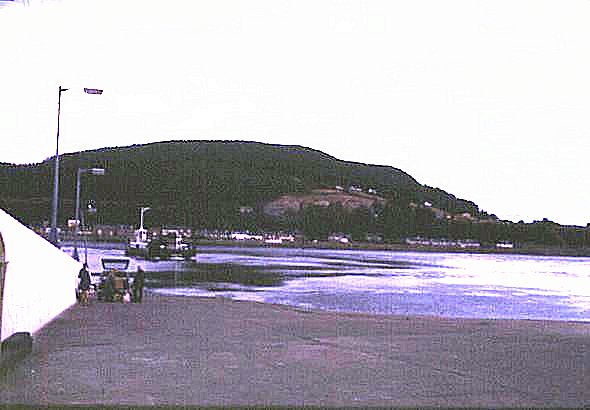 |
Our access to the Black Isle in 1974 was by ferry from South Kessock over to North Kessock. We learned that a new road was being cut through Ord Hill on the other side, but it was possible to reach Kilmuir and the Shore-of-Drynie by taking a path eastward above the shore and below Ord Hill. |
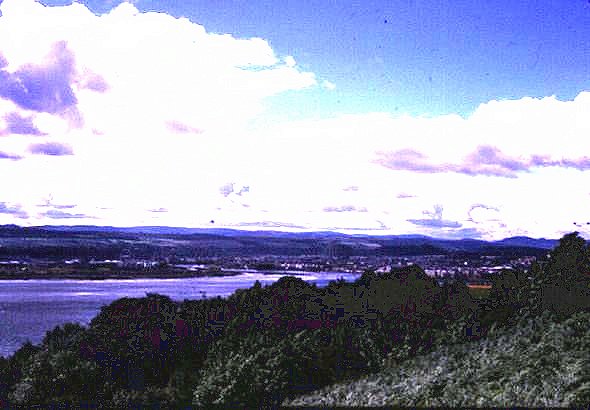 |
Part way up the hill, we paused to look back towards the ferry and Inverness. Plentiful heather contributed to the darker colour of the hillside, but some grassy whin (a broom-like plant) was associated with bright green ferns or bracken on the hillside beneath the trees. |
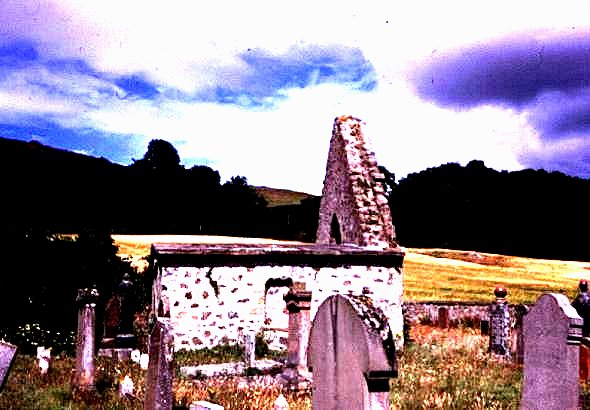 |
A steep hill led up from the sleepy hamlet of Kilmuir to this ancient graveyard. It was later that I realized we were standing in the centre of a site cleared by my ancestors, Alexander Ross and Margaret Noble, and their family. Catharine and Agnes Ross, the youngest members were born at "Redhas", the family name for this area. |
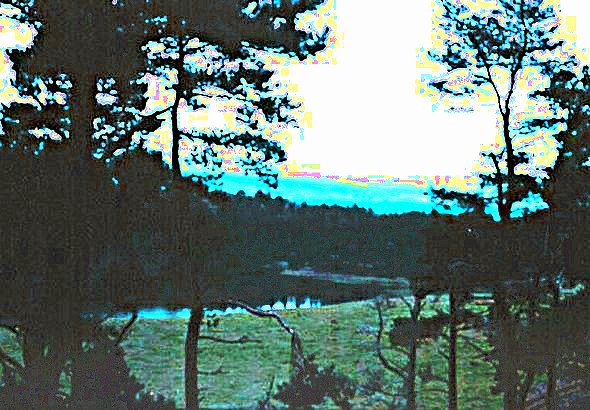 |
Higher above the shore, the depths of wee Loch Lundie are inhabited by a legendary water bull, Tarbh Uisge, which may be heard bellowing beneath the ice during the winter. Unfortunately, the loch has never been known to freeze. |
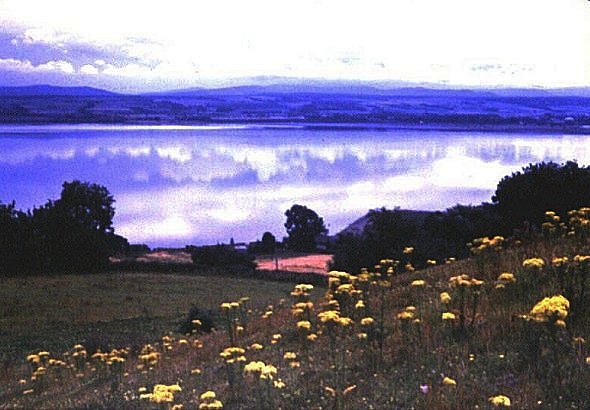 |
South of Loch Lundie, we had a splendid view of the the pastures above and eastwards from the ancient graveyard. We were actually exploring an area covering approximately 18 acres, the exact amount of land cleared by the Rosses. The location of the old cotter's homes of my ancestors would have been west beside the ancient cemetery below. |
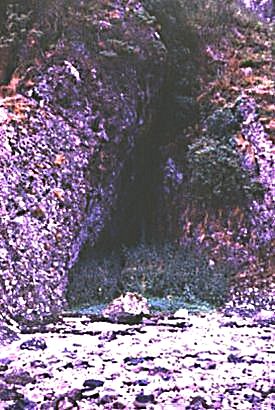 |
Pat and I made our way along the shore below Craigie Howe to the mouth of Munlochy Bay. We noticed smaller caves which had been etched into the base of the cliff. |
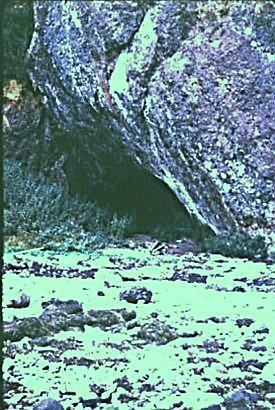 |
At last we discovered the larger Cave of the Feinns, where a band of warriors lie wrapped in slumber awaiting the call on the silver trumper of their chivalrous leader, Fin Mac-Coul. |
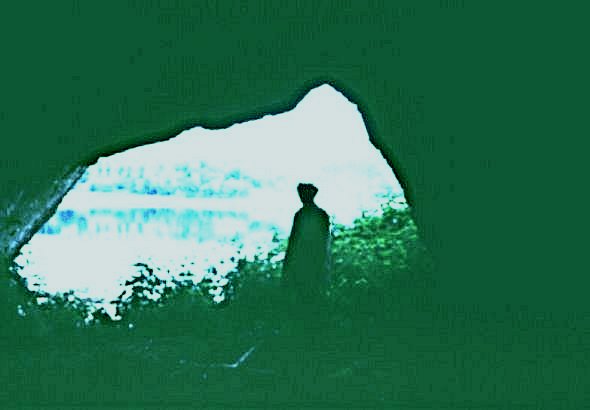 |
As I crouched twenty feet inside the entrance and peered into the black recesses, the silence was overwhelming. According to legend, the waters of a well trickling through the roof were said to be a cure for deafness. |
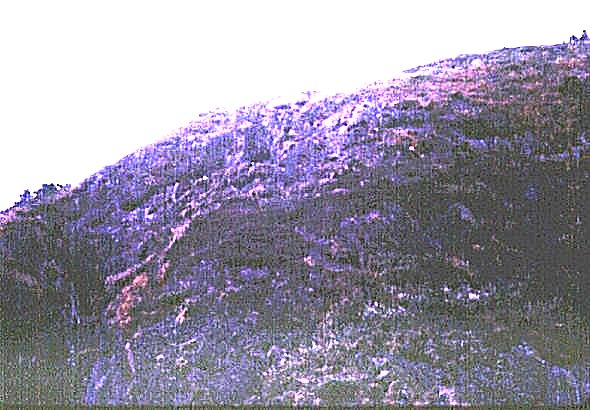 |
Sea birds roosted on the 400-foot high cliffs of Craigie Howe. On its flat top, Taindore, the home of Donald Fraser, was once located. He married Elizabeth Ross and lived beside the Rosses at Shore-of-Drynie after they obtained a ten year extension on their lease in 1950. The emigrations to Canada had already begun. |
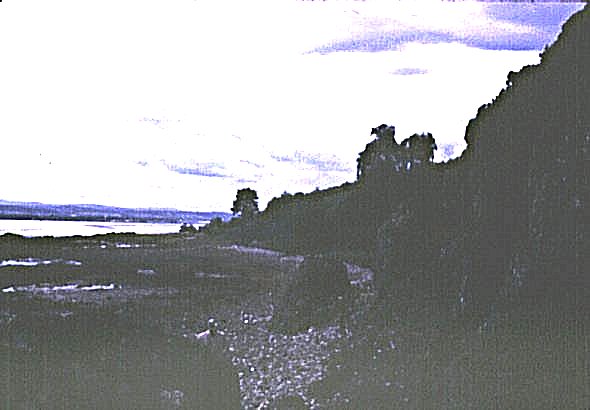 |
Two men and a boy simultaneously yelled, "Hey, the tide's almost in." We wasted no time getting to the mouth of Munlochy Bay, where we took a picture towards the "Redhas" area of the Shore-of-Drynie. |
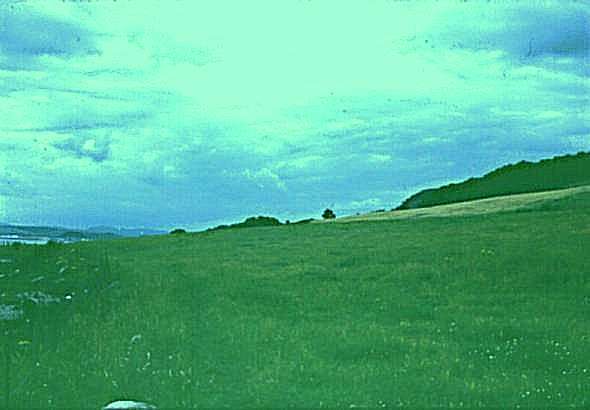 |
Thus, we returned to the site in the Parish of Knockbain, where the Rosses had obtained a 21-year lease in 1829, after their eviction from the Redcastle estate in Killearnan Parish. This was their final Scottish home. |
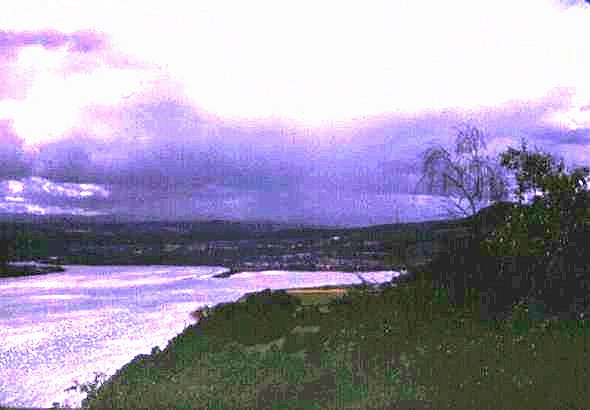 |
As we return to the path along the side of Ord Hill, we planned to rest up before visiting Redcastle and Spital Shore, where Alexander Ross and Margaret Noble married and settled in a cotter's home near her parents. |
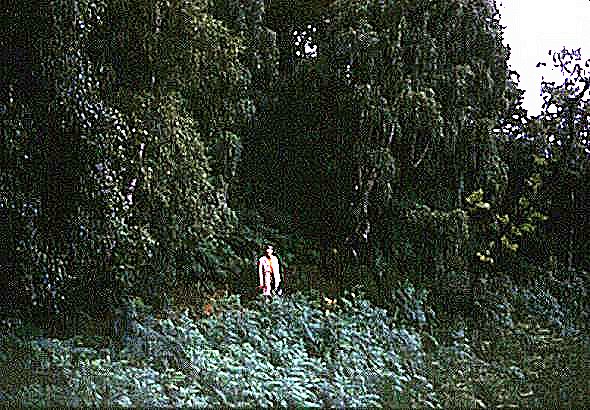 |
From the higher path we reached the lower path which led to the shore road into North Kessock. |
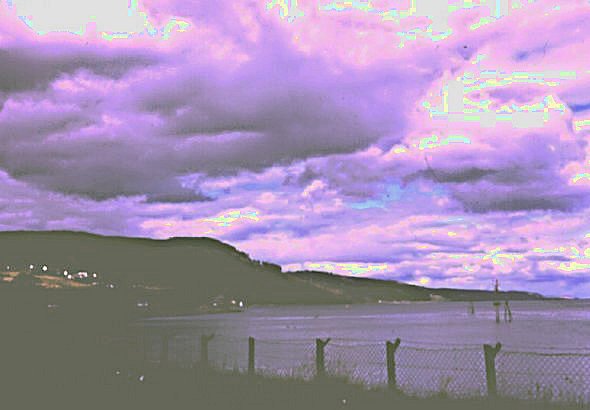 |
There was time for one glance back towards Ord Hill from the ferry road on the South Kessock side in Inverness. A bridge would soon replace the ferry ... and it would link Inverness to a new route over Ord Hill. |